Ditapis dengan
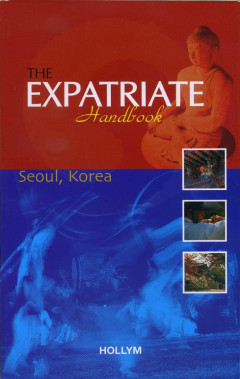
The Expatriate Handbook: Seoul, Korea
This handbook provides as much assistance to you as can expatriate living in Seoul as it has for me in compiling it. This handbook has been designed as a starting point, for the expatriate to receive a quicker, more thorough bearing and understanding of the city in which they live and work. It is aimed that this handbook will allow individuals and families to settle more quickly and smoothly, h…
- Edisi
- Revised edition
- ISBN/ISSN
- 1-56591-046-X
- Deskripsi Fisik
- vi, 345 p. : ill. ; 19 cm.
- Judul Seri
- -
- No. Panggil
- 951.95 VIL e
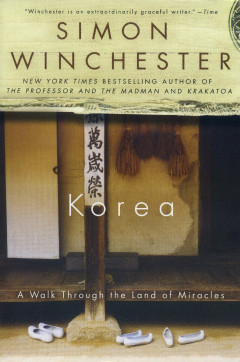
Korea: A Walk Through the Land of Miracles
Korea is that rare book that actually defines a nation and its people. Winchester’s gift for capturing engaging characters in true, compelling stories provides us with a treasury of enchanting and informed insight on the culture, language, history, and politics of this little-known corner of Asia. With a new introduction by the author, Korea is a beautiful journey through a mysterious country…
- Edisi
- -
- ISBN/ISSN
- 00-6075-044-8
- Deskripsi Fisik
- xix, 298 p. ; 21 cm.
- Judul Seri
- -
- No. Panggil
- -

Governance reform in Indonesia and Korea : a comparative perspective
- Edisi
- -
- ISBN/ISSN
- 9794207403
- Deskripsi Fisik
- xiv, 442 p. : ill. ; 24 cm.
- Judul Seri
- -
- No. Panggil
- -
- Edisi
- -
- ISBN/ISSN
- 9794207403
- Deskripsi Fisik
- xiv, 442 p. : ill. ; 24 cm.
- Judul Seri
- -
- No. Panggil
- -
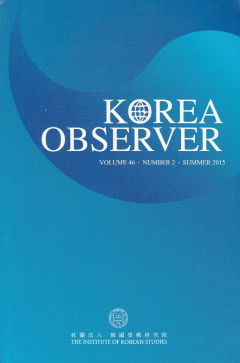
Korea Observer Vol. 46 No. 2, Summer 2015
Korea Observer Vol. 46 No. 2, Summer 2015 contents: Another Look At Partisan Polarization In The South Korean Mass Public: Ideological or Affective Polarization by Jae Mook Lee; A Model On The Rise And Decline Of South Korean Anti-American Sentiment by Kisuk Cho; Development Of Publicly-Funded Social Care In Japan and Korea: Policy Linkage Between Social Care Programs and Labor Market Policies …
- Edisi
- Vol. 46 No. 2, Summer 2015
- ISBN/ISSN
- 0023-3919
- Deskripsi Fisik
- 214 hlm. : il.; 24 cm
- Judul Seri
- -
- No. Panggil
- -
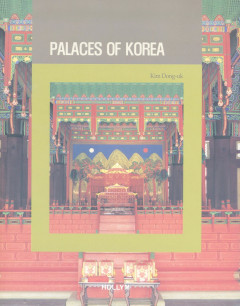
Palaces of Korea
This book is describing the palaces of Korea. In Korea in particular, palace-building was strongly influenced by Chinnese style, largely due to the geographical proximity and close political relations of the two countries. Since Korea’s unique culture had evolved over a long period of time, it should come as no surprise that it did not simply imitate everything China had to offer. This was mo…
- Edisi
- -
- ISBN/ISSN
- 1-56591-225-X
- Deskripsi Fisik
- 137 p. : ill. ; 24 cm.
- Judul Seri
- (Korean Culture Series 3)
- No. Panggil
- 728.825 195 KIM p
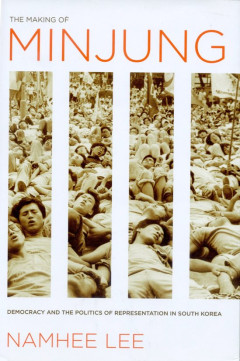
The Making of Minjung: Democracy and The Politics of Representation In South …
Understanding the minjung movement is essential to understanding South Korea’s recent resistance to U.S. influence. Along with its wellknown economic transformation, South Korea has also had a profound social and political transformation. The minjung movement drove this transformation, and this book tells its story comprehensively and critically.
- Edisi
- -
- ISBN/ISSN
- 978-0-8014-4566-8
- Deskripsi Fisik
- 349 p. : ill. ; 24 cm.
- Judul Seri
- -
- No. Panggil
- 320.95195 NAM m
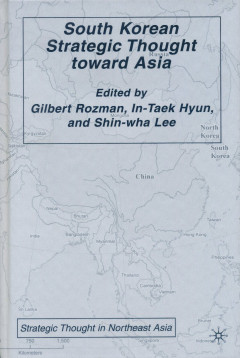
South Korean Strategic Thought Toward Asia
This comprehensive project covers the evolution of strategic thinking in South Korea since the 1980s in regard to China, Japan, Russia, regionalism, and reunification. Following a consistent framework, the book provides detailed analysis of how and why successive presidents chose new approaches. An overview raises broad questions about the turning points from nordpolitik to the Sunshine Policy …
- Edisi
- -
- ISBN/ISSN
- 1-4039-7555-8
- Deskripsi Fisik
- xix, 258 p. ; 22 cm.
- Judul Seri
- (Strategic thought in Northeast Asia)
- No. Panggil
- 355.03105195 ROZ s
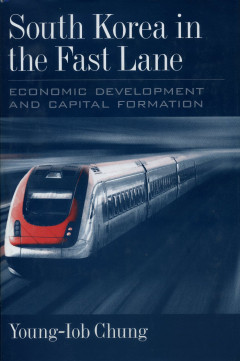
South Korea in the Fast Lane: Economic Development and Capital Formation
This book, as a sequel to Korea under siege, is unrivalled as a single, comprehensive exposition of South Korea’s phenomenal economic success after the Korean War. It provides a coherent blend of historical details and analytical rigor that makes complexities embedded in South Korea’s process of capital formation and its phenomenol economic growth authoritatively comprehensible. This is an …
- Edisi
- -
- ISBN/ISSN
- 01-9532-545-1
- Deskripsi Fisik
- xiv, 466 p. : ill. ; 24 cm.
- Judul Seri
- -
- No. Panggil
- 338.95195 YOU s
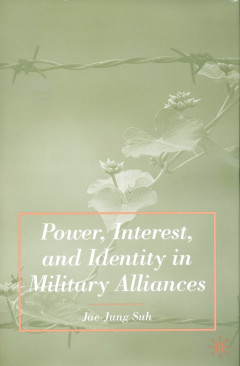
Power, Interest, and Identity in Military Alliance
The theoretical sophistication of this book sets a new standard for all students of military alliances in general and of the U.S.-Korea alliance in specific. Based on meticulous empirical research, suh’s nuanced analysis develops a compelling ease for the political significance of alliances. Beyond the balance of power, alliance politics trigger processes that construct the identities of alli…
- Edisi
- -
- ISBN/ISSN
- 1-4039-7928-6
- Deskripsi Fisik
- xv, 286 p. : ill. ; 22 cm.
- Judul Seri
- -
- No. Panggil
- 355.031 519 5 JAE p
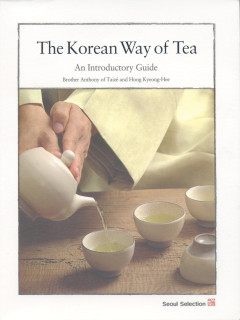
The Korean Way of Tea: An Introductory Guide
This book is contain introductory guide is a welcome addition for anyone interested in tea and its extraordinary contribution to the Korean cultural tradition.
- Edisi
- -
- ISBN/ISSN
- 978-89-91913-17-2
- Deskripsi Fisik
- x, 126 p. : ill. ; 19 cm.
- Judul Seri
- -
- No. Panggil
- 641.877 519 5 ANT t
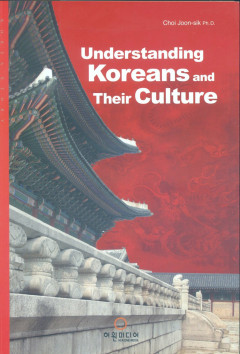
Understanding Koreans and Their Culture
This book approach Korean culture from the limited perspective of religion and arts are the essence of a culture.
- Edisi
- -
- ISBN/ISSN
- 978-89-92162-10-4
- Deskripsi Fisik
- 232 p. : ill. ; 19 cm.
- Judul Seri
- -
- No. Panggil
- -
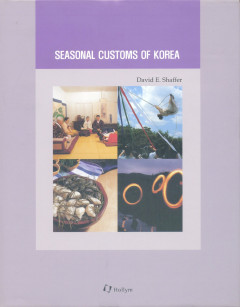
Seasonal Customs of Korea
This book is describing the customs of culture is not an easy undertaking, especially if that culture has customs spanning centuries, and indeed, millennia. Korea’s long-observed seasonal customs of the past do still, however, have considerable influence upon the formation of the behavioral and attitudinal patterns of present-day society. In this way, customs of yesteryear live on to influenc…
- Edisi
- -
- ISBN/ISSN
- 978-1-56591-245-8
- Deskripsi Fisik
- x, 207 p. : ill. ; 25 cm.
- Judul Seri
- (Korean Culture Series 7)
- No. Panggil
- 306.519 5 SHA s
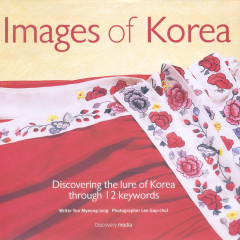
Images of Korea: 12 Cultural Symbols Showing the True Inside of Korea
This book discover the lure of Korea through 12 keywords. The true nature of Korea is experienced through the introduction of the following inherently Korean keywords: Kimchi, bulgogi, ginsaeng, hanbok, taekwondo, hangeul, talchum, Royal Ancestral Ritual Music, Bulguksa Temple, Seokguram Grotto, Seokraksan Mountain, and World-Class Artist Born out of Korean Culture.
- Edisi
- -
- ISBN/ISSN
- 89-956091-4-1
- Deskripsi Fisik
- 132 p. : ill. ; 21 cm.
- Judul Seri
- -
- No. Panggil
- -
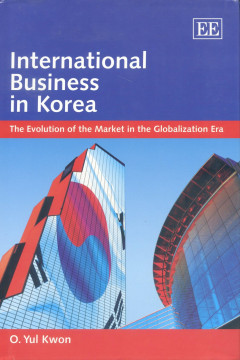
International Business in Korea: The Evolution of the Market in the Globaliza…
In this book, O. Yul Kwon uses an institutional framework to provide a comprehensive evaluation of the environmental and operational dynamic of international business in South Korea from the rapid growth period 1963-1996, through recovery from the 1997 financial crisis, to the present. The study assesses that the South Korean market and business practices will maintain some sui generis charact…
- Edisi
- -
- ISBN/ISSN
- 978-1-84720-570-4
- Deskripsi Fisik
- x, 265 p. : ill. ; 24 cm.
- Judul Seri
- -
- No. Panggil
- 650.5195 YUL a
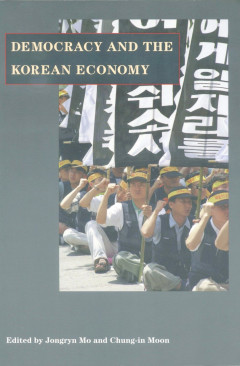
Democracy and The Korean Economy
In this book, each author offers his own approach to addressing the problem of determining abd explaining the economic effects of democracy. Chung-in Moon sees ideology as the dominant force shaping economic policy and performance. Before the 1980s, the dominant economic ideology in Korea was dirigisme, or the developmental state. The findings of this volume illustrate the complicated pattern i…
- Edisi
- -
- ISBN/ISSN
- 0-8179-9552-2
- Deskripsi Fisik
- xix, 210 p. : ill. ; 23 cm.
- Judul Seri
- -
- No. Panggil
- 338.95195 JON d
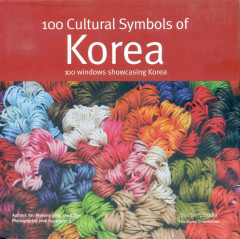
100 Cultural Symbols of Korea: 100 Windows Showcasing Korea
This book can be regarded as 100 individual windows into the past and present of Korea. In this regard, 100 windows introduced herein provide readers with with an oppotunity to find out who Koreans were and are, what they eat, and what kinds of thoughts have animated them during this long process. This book also offers readers insight into how modern-day Koreans live.
- Edisi
- -
- ISBN/ISSN
- 978-89-956091-6-3 03900
- Deskripsi Fisik
- 168 p. : ill. ; 21 cm.
- Judul Seri
- -
- No. Panggil
- 306.5195 YOO c

Korean As Knowledge Economy
The republic of Korea has been experiencing rapid, and more importantly, sustained economic growth since 1960s. This has resulted in its real GDP percapita increasing rapidly enabling the once low-income country to join the ranks of high-income industrialized nations within a short time span of four and a half decades.
- Edisi
- -
- ISBN/ISSN
- 978-0-8213-7201-2
- Deskripsi Fisik
- xi, 187 hlm. : il. ; 26 cm.
- Judul Seri
- -
- No. Panggil
- -
 Karya Umum
Karya Umum  Filsafat
Filsafat  Agama
Agama  Ilmu-ilmu Sosial
Ilmu-ilmu Sosial  Bahasa
Bahasa  Ilmu-ilmu Murni
Ilmu-ilmu Murni  Ilmu-ilmu Terapan
Ilmu-ilmu Terapan  Kesenian, Hiburan, dan Olahraga
Kesenian, Hiburan, dan Olahraga  Kesusastraan
Kesusastraan  Geografi dan Sejarah
Geografi dan Sejarah